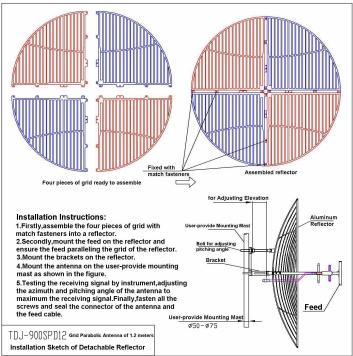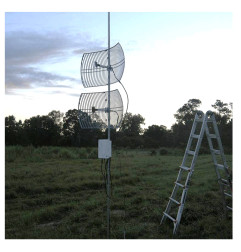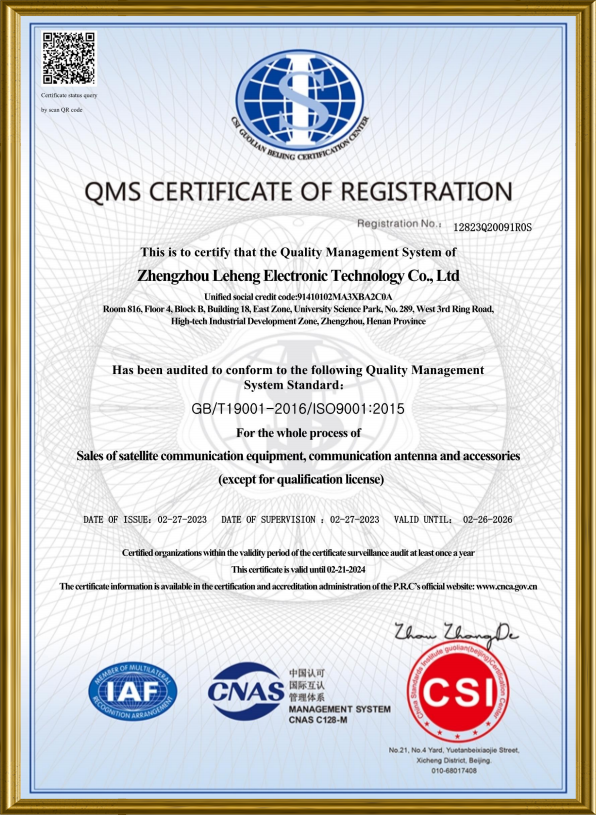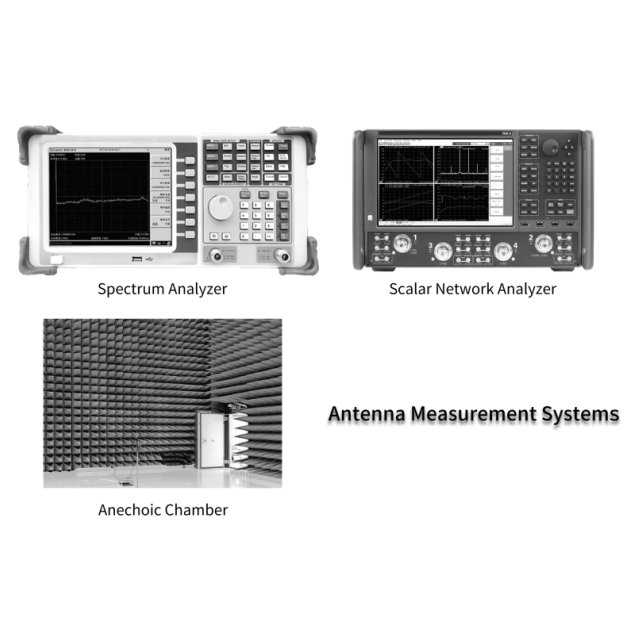

Frequency Range:820-960MHz
18dBi gain parabolic antenna
N female connector grid antenna
UV coat parabolic antenna
|
Model |
GL900SPD12 |
|
Freq.Range-MHz |
820-960 |
|
Bandwidth-MHz |
70 |
|
Gain-dBi |
18 |
|
Ver. Beamwidth- ° |
17 |
|
Hor. Beamwidth- ° |
16.5 |
|
F/ B Ratio-dB |
≥30 |
|
VSWR |
≤1.5 |
|
Impedance-Ω |
50 |
|
Polarization |
|
|
Maximum Power-W |
100 |
|
Connector |
N Female or customized |
|
Diameter-m |
φ 1.2 |
|
Weight-Kg |
7.1 |
|
Mast Diameter-mm |
φ50 to φ75 |
Product Introduction
1. High-Gain, Long-Distance Transmission: Featuring 18dBi high gain and a front-to-back ratio (F/B Ratio) ≥30dB, it provides strong signal focusing and enables long-distance point-to-point transmission in the 820-960MHz frequency band. This effectively solves signal coverage challenges in remote areas and across multiple sites, meeting long-distance communication needs such as wireless bridging.
2. Low-Loss, Stable Signal: With a VSWR ≤ 1.5, signal reflection loss is extremely low. Combined with a standard 50Ω impedance, this ensures efficient signal transmission from the antenna to the device. A 17° vertical beamwidth and a 16.5° horizontal beamwidth precisely control signal coverage, reduce adjacent channel interference, and enhance communication stability.
3. Durable and Durable Design: Utilizing a die-cast aluminum alloy reflector, this design is both sturdy and lightweight (7.1kg). Its UV-stable coating resists aging and corrosion caused by outdoor exposure to the sun and rain. Its low wind load design ensures stability even in strong winds, making it suitable for long-term outdoor deployment.
4. Flexible Installation: The included tilt and swivel bracket supports multiple angles for precise alignment of the transmitter and receiver. It is compatible with masts with a diameter of 50-75mm, offering flexible installation options and quick integration into outdoor deployment scenarios for base stations, wireless bridges, and other equipment.
5. Multi-System Compatibility: Covering the 820-896MHz CDMA and 870-960MHz GSM frequency bands, it is compatible with both mainstream communication systems. Supporting a maximum input power of 100W, it meets both personal and enterprise wireless bridging needs and is also suitable for signal transmission in small base stations, demonstrating strong compatibility.

Application Scenarios
Long-distance wireless bridging in urban or mountainous areas (e.g., surveillance backhaul, network expansion)
Telecom operator GSM/CDMA base station signal extension
Point-to-point communication systems in factories, campuses, and ports
Broadband coverage and signal relay in remote areas
Emergency communication deployment for temporary events

FAQ
Q: What frequency bands does this antenna support?
A: It supports 820-960MHz, covering the CDMA 820-896MHz and GSM 870-960MHz frequency bands.
Q: Does the antenna require assembly?
A: Yes, the reflector grid is a separate design and requires assembly and installation of the feed and bracket. Detailed instructions are included.
Q: Are cables and Connectors included?
A: The antenna comes standard with an N-type female connector. The cable is available separately, but custom connectors are available upon request.
Q: How is its wind resistance?
A: The grid design reduces wind resistance, and the aluminum structure is sturdy, making it suitable for windy environments. However, reinforced mounting is recommended.
Q: Can it be used with 5G or WiFi?
A: No, it is only compatible with frequency bands near 900MHz. For 2.4GHz/5GHz, you will need to select a different model.
Q: How do I adjust the antenna after installation?
A: Use a signal tester to adjust the azimuth and elevation angles to maximize the received signal, then secure the antenna.




Contact: Diana Xie
Phone: 86-15815571536
E-mail: sales@global-antenna.com
Whatsapp:8615815571536
Add: Room826, Floor 8,BLDG 13, University Science Park(East), Zhengzhou City, P.R.Henan, China.Zip Code: 450000